Updated for 2024
We agree: Itchy scalps and pesky lice are no fun, especially when we’re talking about your little one’s head. While it will take work to eliminate them, it’s not impossible to rid your kids’ heads of lice. We’re here to help you better understand what exactly lice are and make sure you know some methods to get rid of them.
Using a fine-toothed metal comb, carefully comb through the child’s hair to remove lice and lice eggs. Watch for lice bugs along the way, and dispose of the insects in water. Do this once every day until the lice are no longer present, and use a lice treatment shampoo to speed up the process.
The most important thing for parents to do is try not to freak out. Lice happens, and it’s not the end of the world. For a more detailed process on how to get rid of lice and leave your kid’s scalp itch-free, keep reading!
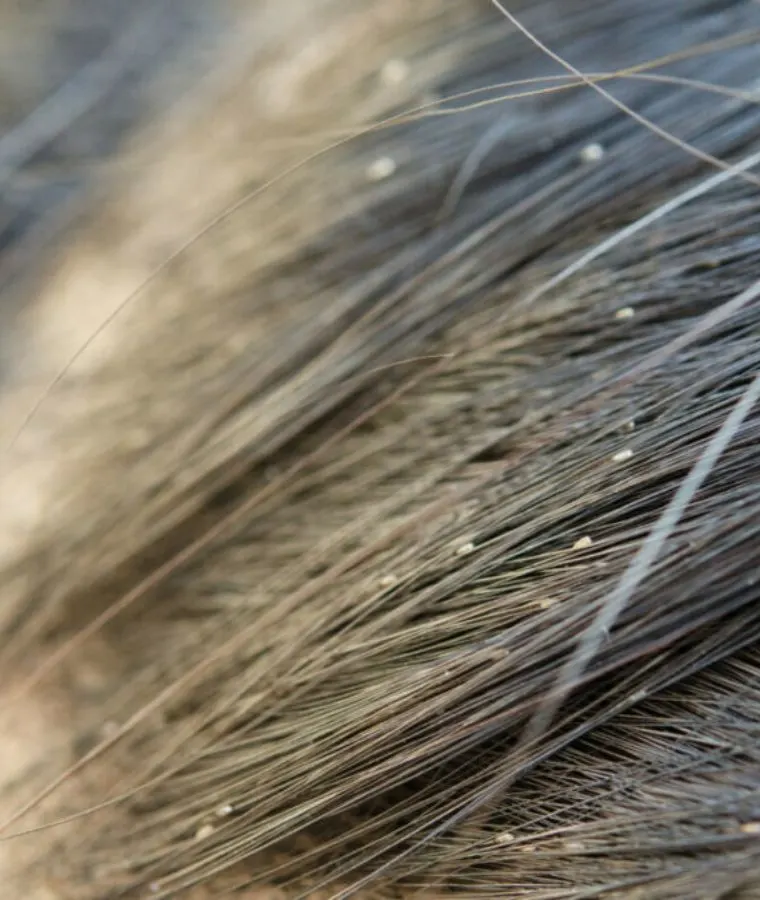
What Are Lice and Why Do They Nest On My Kid’s Scalp?
Head lice are tiny, difficult-to-spot, insects that nest on your head and feed on the blood from your scalp. The bites from head lice can cause moderate to intense itching, both during and after the bite. Lice can lay eggs on the scalp, leading to a prolonged infestation if not treated soon enough. Children are most likely to experience a lice infestation.
Typically, lice are spread from one person to the other when they are in close contact, but if one or more insects have freshly transferred to a person’s clothes, to the floor, or to furniture, they can be transferred to another person if that person comes in contact with the affected area. Lice thrive on the human scalp, however, so they won’t live long on furniture or other surfaces.
While they can be pesky to get rid of and cause an annoying itch, they can’t transfer any bacterial or viral diseases to the infected person. Excessive itching in one area, however, can lead to bleeding, scabbing, and bacterial infection if the raw area has been exposed to bacteria. Prompt treatment is crucial to avoid scabbing and infection, but luckily, you can follow the tips given below or see your child’s pediatrician and receive advice on the best treatment methods.
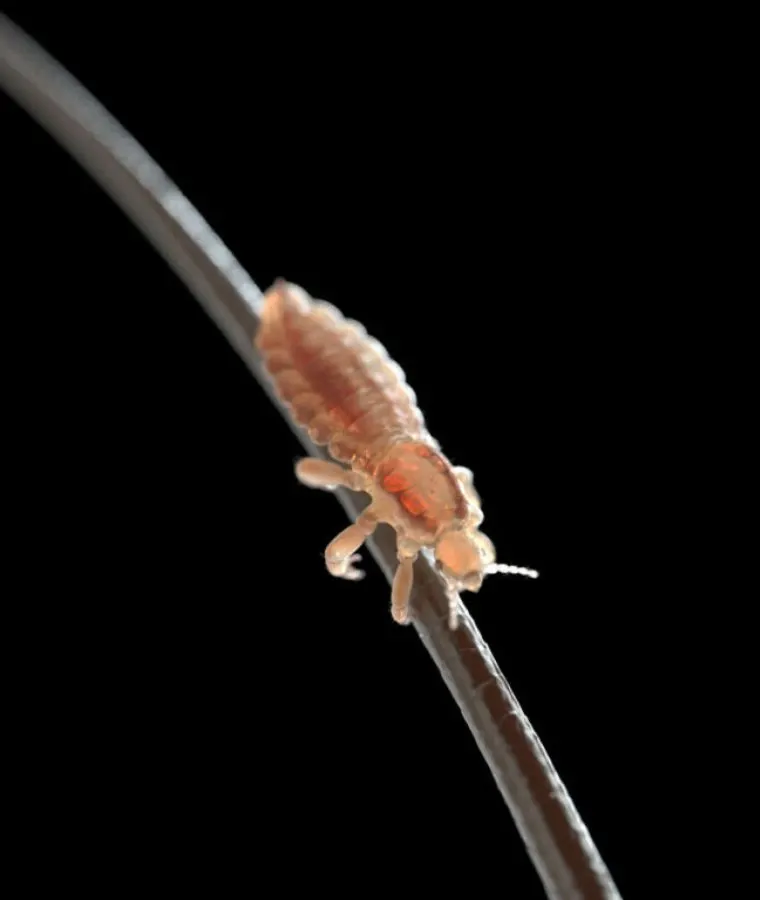
The Most Inexpensive Method of Removing Lice
The cheapest and most common method of removing lice from your child’s head is by using a fine-toothed comb with long metal teeth that are very close together. You can find one of these at your local drugstore or try this Lice Comb we found on Amazon (affiliate link).
Make sure you’re in a well-lit area so that you can better see the lice and the eggs. You’ll want to remove both to ensure the eggs don’t hatch and the lice don’t continue to reproduce. Lice look like tiny black or brown bugs, and they generally cling to the scalp, whereas eggs are tiny, round, and white, and they tend to cling to the hair shafts near the scalp.
You’ll begin by combing through your child’s hair with a brush or a wide tooth comb to get rid of any tangles and smooth out the hair. You can provide your child with something like a book or television show to distract them while you comb through their hair with the fine-toothed comb, as this process can be painful and uncomfortable for your child.
And for you as well.
Next, you’ll want to clip up your child’s hair into sections, starting with clipping up the top section of hair near the front of the head. Wet the available section of your child’s hair with water, and then coat it with a hair conditioner, or some people prefer to use oil.
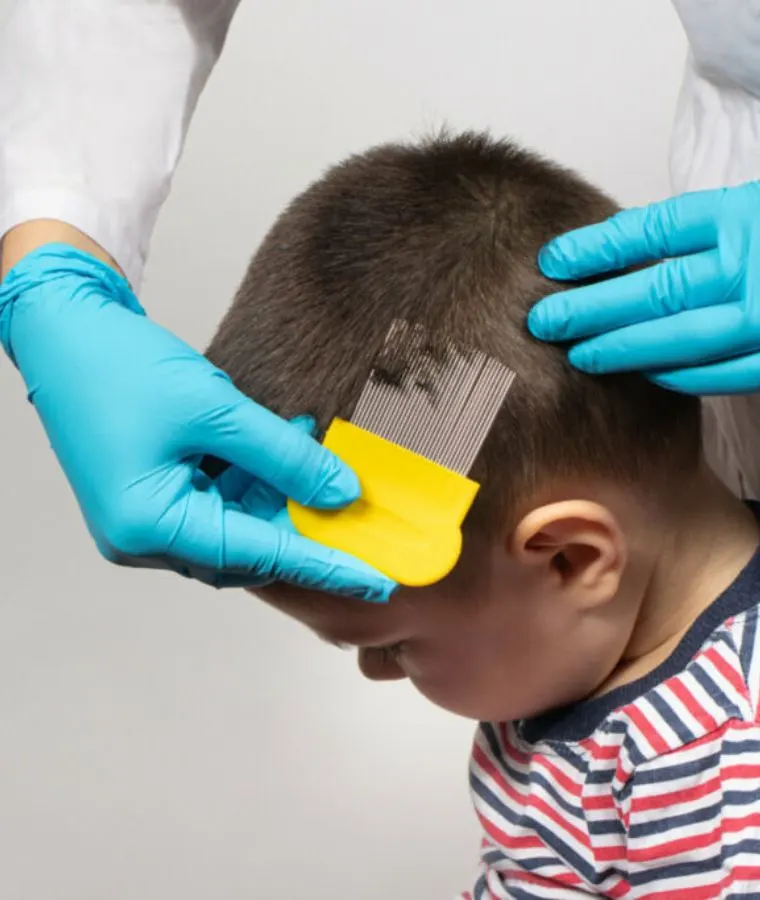
Starting with the tips of the hair, slowly work your way up the section of hair using repeated downward strokes. Comb through the section multiple times, at different angles (from the front, from behind, from the left side, and from the right side of the hair section).
Watch to make sure you’re catching the eggs and lice with your comb. Between each comb through, clean off the comb using a wet paper towel, running water, or a bowl of soap and water. If using paper towels, dispose of the paper towel and replace it after each section’s comb through. Keep combing that section until you no longer notice lice or lice eggs on the comb.
Once finished with each section of hair, rinse all the conditioner out of your child’s hair, and repeat this process each night until no more lice or lice eggs are present.
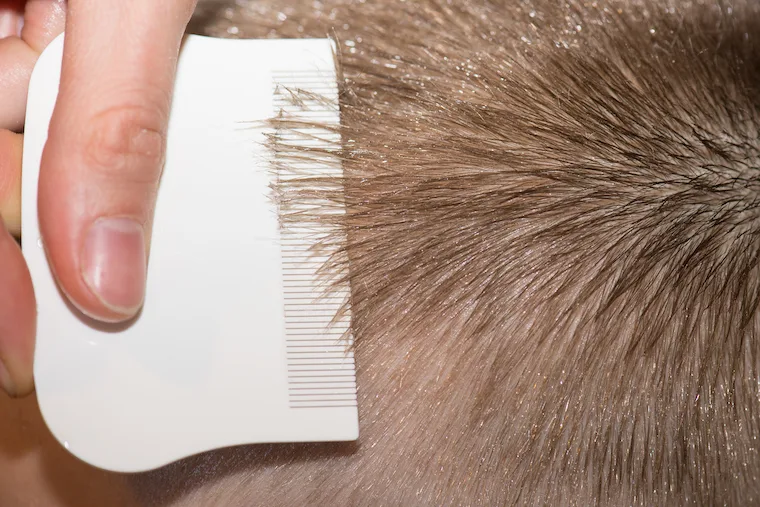
Other Ways to Get Rid of Lice
If your child’s hair is too difficult to comb through because of the texture or thickness of the hair, or if the lice are just too relentless and won’t go away after consistent, daily combing, you can try some other things to get rid of them.
If you simply just need to make the combing process easier, because, say, your child’s hair is too thick, long, or textured to comb through, then you can try cutting your child’s hair until the problem is alleviated.
For girls, you can cut the hair to a shorter length above the shoulders to make it easier to comb through. If the hair is very thick or textured, you can shave the lower layers of hair at the back of the head, as this is generally where the lice tend to linger and feed on the scalp the most, and the hair at the top and front of the head can mask the shave underneath. Then, you’ll be able to easily comb through the hair without it taking so long.
For boys, you can buzz cut their hair using hair clippers, which will make it more difficult for the lice to live and nest on your boy’s scalp. Keep in mind that lice feed on the scalp, not the hair, so as long as they’re able to cling to the scalp, they’ll remain there. At that point, you’ll want to continue combing through his hair or use a lice treatment.
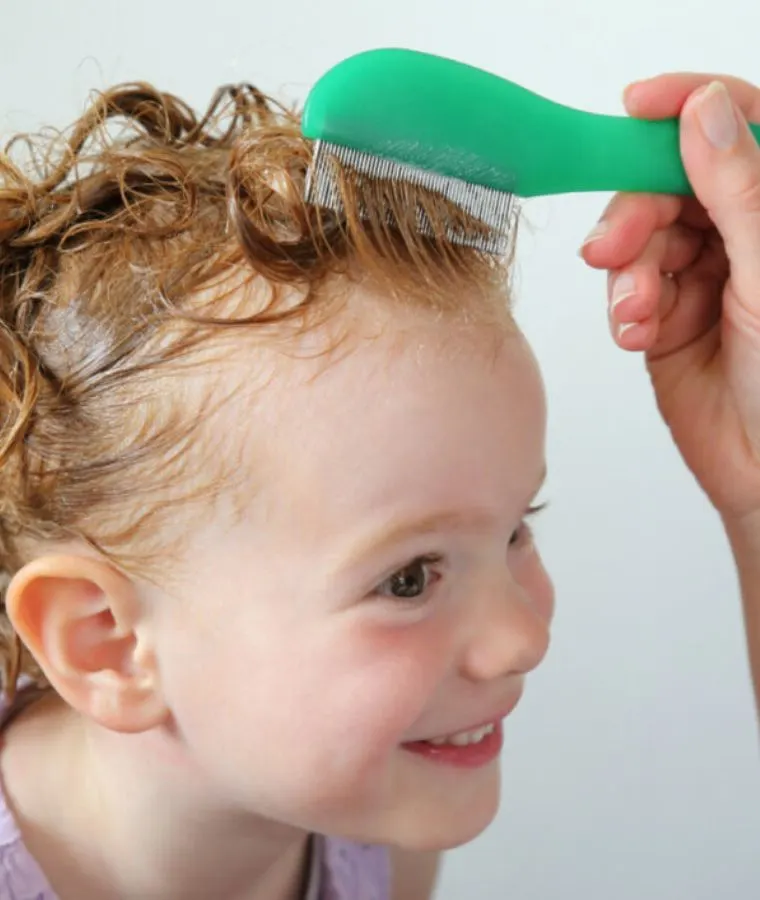
Relentless lice can be removed with the help of special lice shampoos and treatments. Check out this Lice Treatment Kit on Amazon (affiliate link). These products help to kill the lice with the help of an added drug inside the shampoo that is used to treat different types of parasites. That drug attacks the nervous system of the parasite, causing it to become paralyzed and ultimately killing it.
After one treatment, you’ll begin to notice the lice fall out of your child’s hair in the shower or as they go about their day. Your child will likely need consistent washes with the treatment to fully get rid of the lice, but you’ll want to follow the directions on the bottle and be aware of possible side effects of lice shampoo.
Another type of treatment includes going to a licensed hair salon with trained professionals who can offer lice removal services to your child. These professionals will be able to get rid of all the lice in one go. Lice removal services at the salon, as well as bottles of lice treatment, are expensive, however. This is why we also outlined the comb method. Although it takes longer to see results and requires a lot of patience (from both you and your child), there are no side effects of using the comb and it’s far less expensive.
Don’t Delay Treatment: Consequences of Prolonged Head Lice
There often isn’t much you can do to prevent your child from ever getting lice in the first place, as your child can get lice from virtually anywhere, from sitting on the school bus to having a sleepover at a friend’s house. For this reason, no one will (or at least, no one should) judge you for the fact that your child wound up with a head full of lice, much like they wouldn’t blame you for your child catching a common cold.
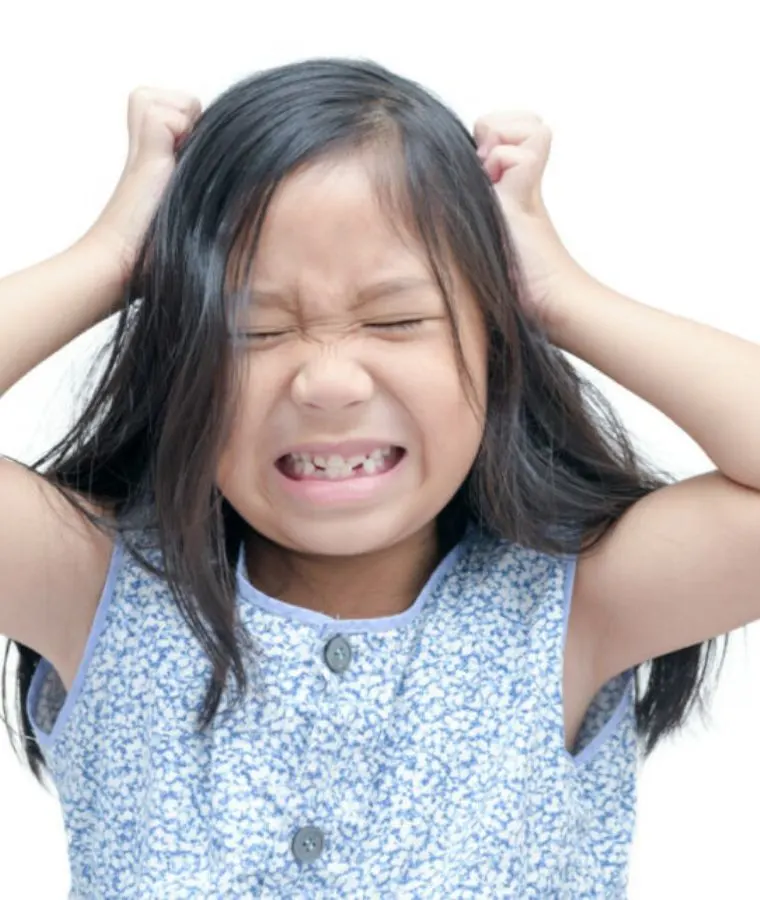
That said, there is a lot you can do after your child comes home with head lice, and get rid of it before the snowball effect happens. Not only will ignoring your child’s head lice cause the lice to spread to other unsuspecting children’s heads (whether they be other children in your home or other children at school), but it can actually cause damage to your child’s scalp.
You can prevent other children in your home from getting lice by preventing hair-to-hair contact during playtime or other activities. You can make sure your children do not share clothing like hats, scarves, coats, or things like hair brushes, combs, and towels where lice can transfer from one child to another. Try to keep the unaffected child from laying on beds, couches, carpets, stuffed animals, or pillows that your affected child recently laid on.
Frequently vacuum the floor and furniture, and machine wash all clothing and bedding used by the child every day until the head lice are completely treated. You can prevent your child from transmitting lice to other children at school by keeping them home for as long as the lice are present. Notify the school that your child has lice and may have already transmitted the lice to another student or may have received lice from another student.
Some school districts have policies regarding lice that require parents to keep their children at home, while others have stated that lice are no longer a reason for children to miss school. Please check with your school to be sure.
If your kid is experiencing that consistent itch of head lice bites, they’re not going to have an easy time resisting that itch. And if that itch is prolonged, they may itch one area of their scalp so much that it causes bleeding, which will eventually scab over and create even more itch for your child. Without proper treatment, those scabs can become infected and even scar if your child continues to itch at the scab.
As soon as you notice your kid itching their head consistently, you’ll need to inspect their scalp for lice. If you notice any lice, you’ll want to immediately begin the process of removing the lice one by one and begin using treatments. The longer the lice remain on your kid’s head, the more lasting effects they will have, and the longer they’ll have to live with that uncomfortable itch, so get to combing!
Related: Where to get Your Kids’ Haircuts in SoCal
MomsLA is your source for Things to do with Kids in Los Angeles
This article is not meant to be a substitute for medical advice.
Disclaimer: MomsLA has made every effort to confirm the information in this article; however, things can often change. Therefore, MomsLA makes no representations or warranties about the accuracy of the information published here. MomsLA strongly urges you to confirm any event details, like date, time, location, and admission, with the third party hosting the event. You assume the sole risk of relying on any of the information in our list. MomsLA is in no way responsible for any injuries or damages you sustain while attending any third-party event posted on our website. Please read our Terms of Use which you have agreed to based on your continued use of this website. Some events have paid to be listed on MomsLA.


